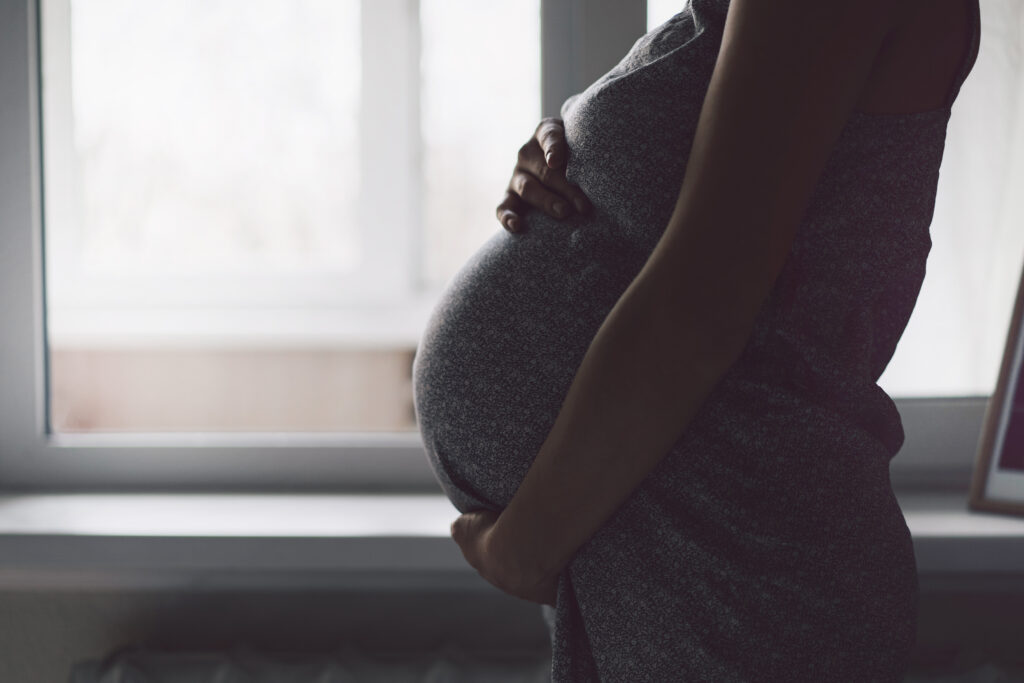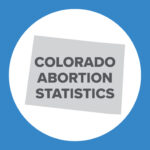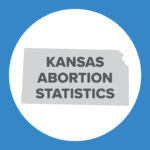Abortion Reporting: Alaska (2021)
Alaska was one of the first states to publish its 2021 abortion report, releasing is 2021 statistics online in April 2022. The report shows that abortions increased from 2020. This is the first state summary from Charlotte Lozier Institute covering calendar year 2021 from states that publish annual reports.
Statistics and Changes in Alaska Abortions, 2020-2021

The report does not include information on Planned Parenthood’s Alaska abortion market share
Abortion Totals and Trends
There were 1,226 abortions reported in Alaska in 2021, up not quite two percent from 2020 (Fig. 1). Chemical abortions declined by two percent, making up 36 percent of the total in 2021. The Charlotte Lozier Institute (CLI) estimates that Alaska’s 2021 abortion rate was 8.5 abortions per 1,000 women ages 15 to 44, lower than the national rate (Fig. 2). As of October 2022, 19 states had published abortion statistics for 2021; 14 reported that abortions increased.
State Report Summary
Alaska’s report cautions that “reported data may include terminations that were medically necessary to save the mother’s life or were not elective (such as ectopic or molar pregnancies) or where medication was provided to manage a miscarriage,” even though Alaska’s Vital Statistics Act’s definition of “induced termination of pregnancy” excludes miscarriage management or ectopic pregnancies.
The vast majority of Alaska abortions (99 percent) were performed on state residents. Just 11 abortions were performed on women from other states, while the state of residence was not reported for two abortions. Over half the abortions were obtained by women in their twenties, with 29 percent on women ages 20 to 24 and 27 percent on women ages 25 to 29. Thirty-one percent of Alaska abortions were performed on women in their thirties. Ten percent of the abortions were performed on girls ages 19 and younger, and four percent were obtained by women ages 40 and older.
Just over half the abortions (53 percent) were obtained by white women. Twenty-one percent were performed on American Indian/Alaska Native women, and seven percent each were performed on Asian/Pacific Islander women and black women. Eight percent of the abortions were obtained by women of other or multiple races, while race was not reported for three percent of the abortions. Ninety-two percent of the abortions were on non-Hispanic women and three percent were on Hispanic women, although ethnicity was not reported for five percent.
Most Alaska abortions were performed on women with 12 or more years of education: 68 percent were performed on women with 12 years of education, and 25 percent were on women with 13 years or more. Six percent of the abortions were obtained by women with fewer than 12 years of education, and one percent were on women for whom level of education was not reported.
Sixteen percent of Alaska abortions were on married women, and 68 percent were on unmarried women. Another 16 percent were performed on women for whom marital status was unknown. Alaska’s report explains that marital status was not reported for an unusually large percentage of abortions because some abortion facilities experienced problems with reporting, and that the state is working to improve reporting going forward.
Forty-seven percent of the abortions were obtained by women who had no previous live births, compared to a fifth on women with one prior live birth and a third on women with more than one. Sixty-six percent of the abortions were performed on women with no prior abortions. Twenty-one percent were performed on women with one previous abortion, and 13 percent were on women with two or more prior abortions.
Forty-four percent of Alaska abortions were funded by state Medicaid, an uptick after several years of decline. Eight percent were covered by insurance, and 39 percent were self-pay. Nine percent were funded through some other means.
In 2021, four of the abortions were performed because the babies were diagnosed as having congenital anomalies. Seventeen percent of the women undergoing abortion received Alaska’s informed consent materials.
Thirty percent of the abortions reported in Alaska occurred at six weeks of gestation or earlier. Forty-five percent were performed between seven and nine weeks, and 19 percent occurred between 10 and 13 weeks of gestation. Four percent of Alaska abortions were performed between 14 and 15 weeks, and two percent occurred from 16 to 17 weeks. There was one abortion performed between 18 and 20 weeks of gestation and two abortions performed at 21 weeks of gestation or later. These were the first Alaska abortions in several years that were reported at or after 21 weeks.
Fifty-four percent of reported Alaska abortions were performed using suction curettage, and 10 percent were dilation and evacuation procedures. Thirty-six percent were chemical abortions, down slightly from 37 percent the previous year. A different type of procedure was used for four abortions.
Chemical Abortion by Mail
It is possible that the apparent decline in chemical abortions in Alaska is due to underreporting of chemical abortions conducted via telemedicine. In mid-2020, the abortion industry used the Covid-19 pandemic to obtain a court order that blocked Food and Drug Administration (FDA) regulations on chemical abortion and allowed abortion pills to be sent through the mail. In April 2021, the FDA announced that it was suspending the regulation for the duration of the pandemic, and in December 2021, the FDA permanently allowed chemical abortion pills to be distributed via the mail. At least one major online abortion pill provider, Aid Access, is active in Alaska, advertising and mailing abortion pills to Alaskan women.
In response to a CLI inquiry at the beginning of the pandemic, the Alaska Department of Health and Social Services explained that the state’s abortion reporting requirements apply only to abortion providers and facilities located within the state, and that the requirements do not extend to groups mailing abortion pills into Alaska but located elsewhere. This would include a doctor affiliated with a group like Aid Access who might prescribe abortion pills for Alaskan women while located in a different state. Consequently, any abortions performed using pills mailed from outside the state are not reflected in the official numbers.
State Ranking
In CLI’s 2016 paper evaluating abortion reporting across the United States, Alaska’s reporting tied for 21st best. Alaska could improve its reporting by ensuring that all abortions occurring in the state are reported, including those induced using abortion pills mailed from out-of-state. Additionally, Alaska could require healthcare providers to report abortion-related complications they treat.
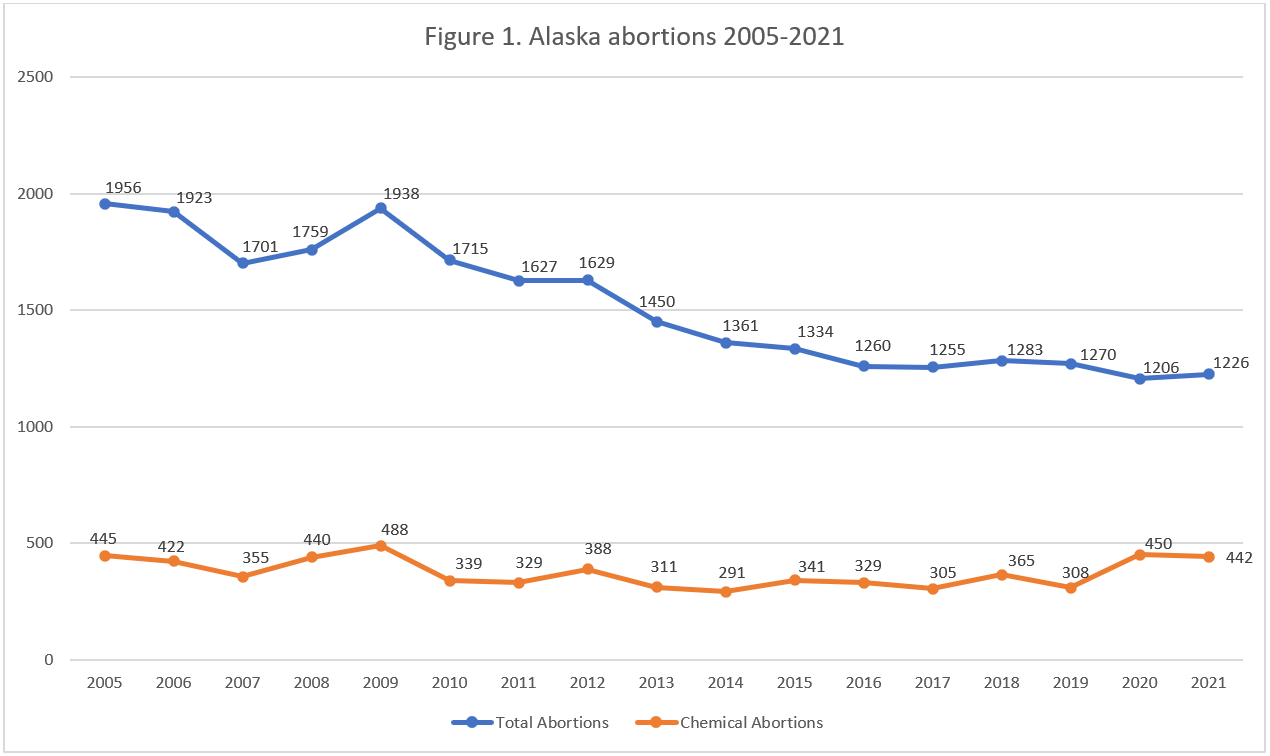
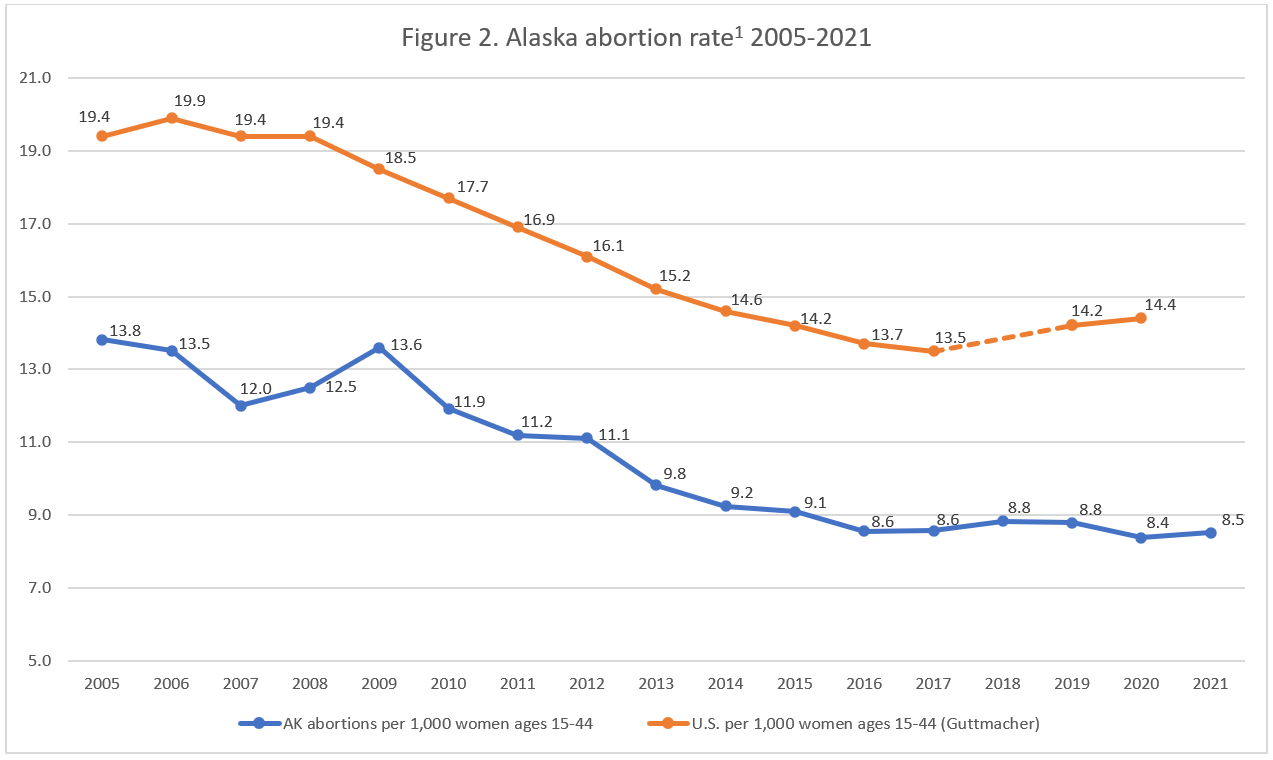
- Rates were calculated by CLI using the following formula: (total number of abortions performed in Alaska ÷ number of resident women ages 15-44) x 1,000. Rates may differ slightly from previous CLI articles due to revised population estimates. Population estimates were obtained from CDC WONDER.
Click here to view reporting from:20242023202220202019201820172016




















